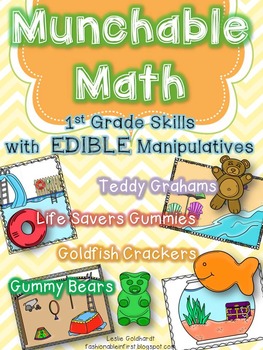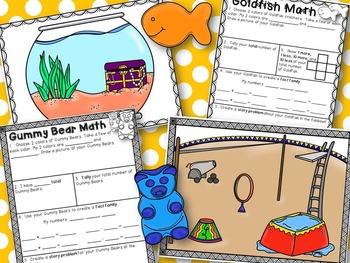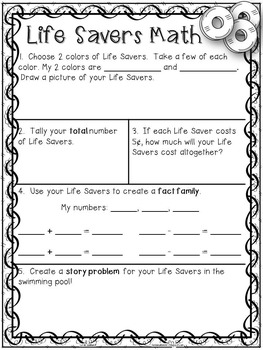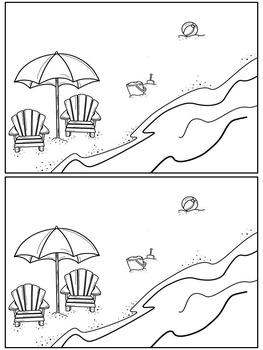Munchable Math
Leslie Goldhardt
321 Followers
Grade Levels
1st
Subjects
Resource Type
Standards
CCSS1.NBT.C.5
CCSS1.OA.A.1
CCSS1.OA.B.3
CCSS1.OA.C.5
CCSS1.OA.C.6
Formats Included
- PDF
Pages
16 pages
Leslie Goldhardt
321 Followers
Description
Need a FUN activity to get your students motivated and engaged?! Look no further! These activities are a great way to spiral first grade skills! Whether it is for an end of the year lesson, or used sporadically throughout the year to spike excitement about math, these are a classroom must have!
INCLUDES:
4 Edible Math Activities
Math mats for each activity (color & B/W)
Skills included: fact families, story problems, tallies, money, 1 more/1 less,10 more/10 less
What you will need (not included):
2 flavors/colors of Teddy Grahams
Rainbow Goldfish
Life Savers Gummies
Gummy Bears
**sort by color prior to the activity**
TIPS:
Recruit parent helpers to donate the treats!
Use a veggie/dip tray to sort the snacks by color/flavor.
For a math craftivity, have students glue their edible manipulatives onto their math mats (just be sure you have some extras for them to eat!)
To save on ink/paper, print 2 pages per page.
Each of these activities include hand drawn clipart from LG Doodles.
INCLUDES:
4 Edible Math Activities
Math mats for each activity (color & B/W)
Skills included: fact families, story problems, tallies, money, 1 more/1 less,10 more/10 less
What you will need (not included):
2 flavors/colors of Teddy Grahams
Rainbow Goldfish
Life Savers Gummies
Gummy Bears
**sort by color prior to the activity**
TIPS:
Recruit parent helpers to donate the treats!
Use a veggie/dip tray to sort the snacks by color/flavor.
For a math craftivity, have students glue their edible manipulatives onto their math mats (just be sure you have some extras for them to eat!)
To save on ink/paper, print 2 pages per page.
Each of these activities include hand drawn clipart from LG Doodles.
Total Pages
16 pages
Answer Key
N/A
Teaching Duration
N/A
Report this resource to TPT
Reported resources will be reviewed by our team. Report this resource to let us know if this resource violates TPT’s content guidelines.
Standards
to see state-specific standards (only available in the US).
CCSS1.NBT.C.5
Given a two-digit number, mentally find 10 more or 10 less than the number, without having to count; explain the reasoning used.
CCSS1.OA.A.1
Use addition and subtraction within 20 to solve word problems involving situations of adding to, taking from, putting together, taking apart, and comparing, with unknowns in all positions, e.g., by using objects, drawings, and equations with a symbol for the unknown number to represent the problem.
CCSS1.OA.B.3
Apply properties of operations as strategies to add and subtract. If 8 + 3 = 11 is known, then 3 + 8 = 11 is also known. (Commutative property of addition.) To add 2 + 6 + 4, the second two numbers can be added to make a ten, so 2 + 6 + 4 = 2 + 10 = 12. (Associative property of addition.)
CCSS1.OA.C.5
Relate counting to addition and subtraction (e.g., by counting on 2 to add 2).
CCSS1.OA.C.6
Add and subtract within 20, demonstrating fluency for addition and subtraction within 10. Use strategies such as counting on; making ten (e.g., 8 + 6 = 8 + 2 + 4 = 10 + 4 = 14); decomposing a number leading to a ten (e.g., 13 - 4 = 13 - 3 - 1 = 10 - 1 = 9); using the relationship between addition and subtraction (e.g., knowing that 8 + 4 = 12, one knows 12 - 8 = 4); and creating equivalent but easier or known sums (e.g., adding 6 + 7 by creating the known equivalent 6 + 6 + 1 = 12 + 1 = 13).





